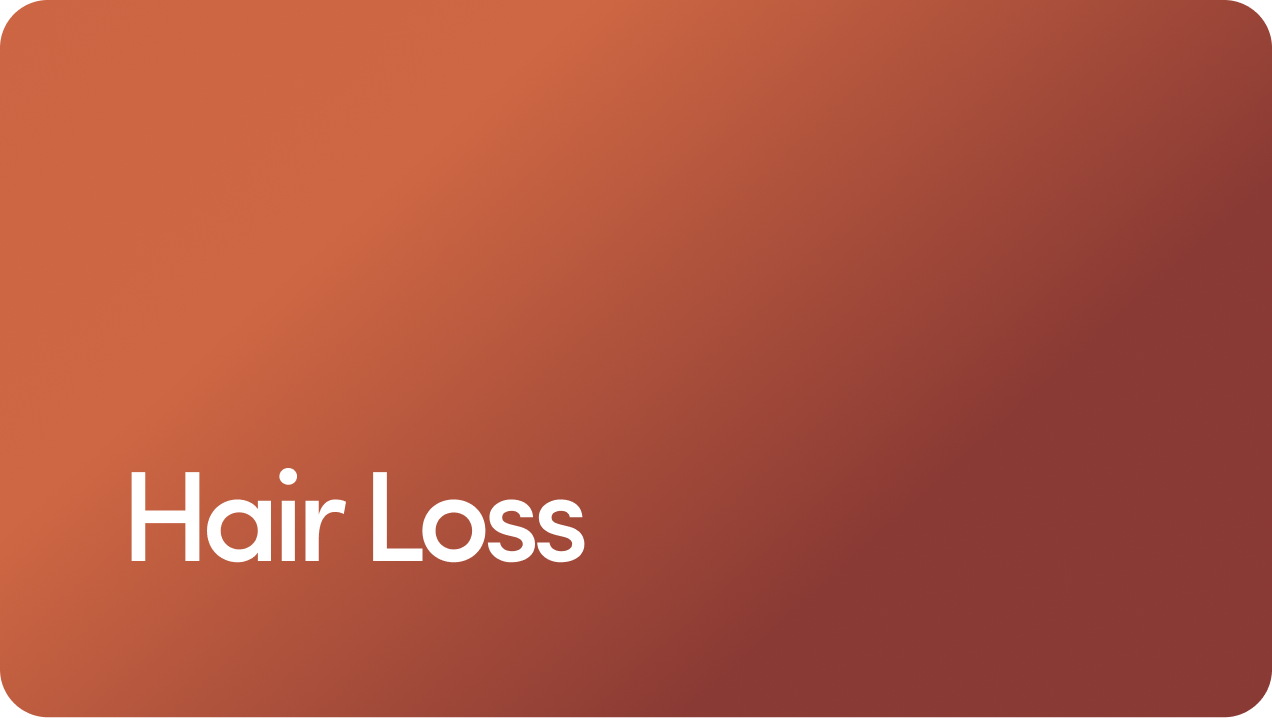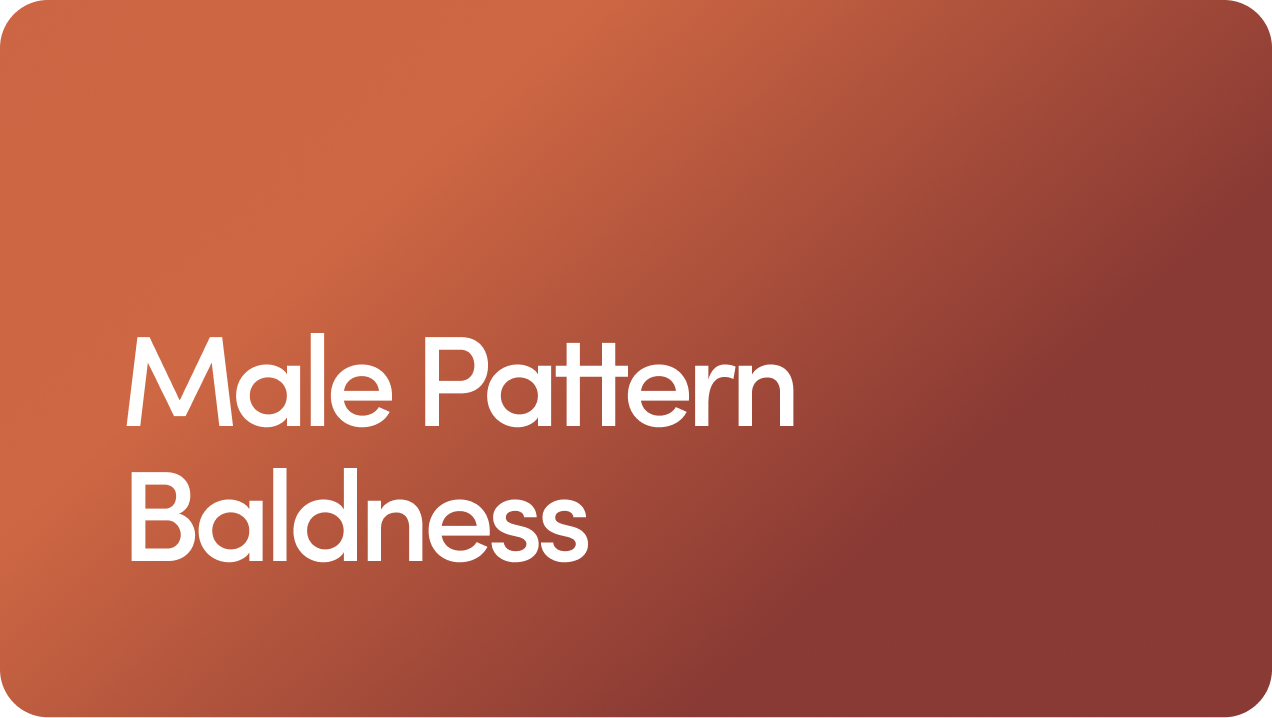Content
FDA approved for more than 25 years
Is 2-in-1 Shampoo Bad? Pros, Cons, and Tips for Use

The 2-in-1 shampoo is a busy man's best friend: one bottle, two jobs, minimal effort.
In theory, it’s a genius invention, combining shampoo (which cleanses) and conditioner (which hydrates) into one convenient formula. Less time in the shower, fewer bottles cluttering your bathroom, and one swift lather-and-go routine—what’s not to love?
Still, these products tend to get a bad rap. Even though we know shampoo doesn’t cause hair loss, is 2-in-1 shampoo bad for your hair? Are there other downsides to using it?
Below, you’ll learn how 2-in-1 shampoos work, the pros and cons, and why they might be best used only in specific situations.
Content
What Is a 2-in-1 Shampoo, Exactly?
Shampoo and conditioner are like the PB&J of your shower lineup, so a 2-in-1 shampoo might seem like an efficiency win in the world of hair care products.
However, this dynamic duo are basically opposites. Shampoo is designed to strip away dirt, oil, and product buildup, while conditioner is meant to replenish moisture and smooth the hair.
Trying to do both at the same time is like washing your car while also trying to polish it—it kind of works, but you’re probably not getting the end result you really wanted.
If you’ve got relatively normal hair and don’t care much beyond “clean and presentable,” a 2-in-1 shampoo works in a pinch. However, for guys with dry hair, oily scalp, curly locks, or any kind of scalp issue, this multitasking concoction might not cut it.
How 2-in-1 Shampoos Work
A 2-in-1 shampoo is like a “jack of all trades, master of none.” It attempts to cleanse and condition your hair in a single step, which sounds like a time-saver until you realize that they have fundamentally opposing goals.
Shampoo’s job is to break down and wash away unwanted substances from your hair and scalp. It typically contains surfactants (aka, cleansing agents) that latch onto grime and rinse it away.
Conditioner, on the other hand, is all about restoring and locking in moisture, smoothing the hair cuticle, and preventing frizz. It contains conditioning agents that coat the hair, leaving it softer and easier to manage.
So, how does a 2-in-1 product do both at the same time?
The secret lies in silicone-based ingredients (like dimethicone) that coat the hair with a lightweight layer of conditioning agents while cleansing agents (like laureth sulfates or cationic detergents) do their thing. Theoretically, this means your hair gets clean and conditioned in one go.
But here’s the catch: Because these products need to balance both cleansing and conditioning, they often don’t do either job exceptionally well. If the shampoo part is too strong, it may strip away the conditioner before it can work. If the conditioner is too heavy, it might leave your hair feeling greasy or weighed down. It’s like trying to butter toast while it’s still in the toaster—not the smoothest process.
Benefits of Using a 2-in-1 Shampoo
While 2-in-1 shampoos aren’t perfect for everyone, they do have their perks—especially for guys who like to keep things simple.
Here are some reasons why you might actually want to use one or at least have one on hand for when it makes sense:
Time-saving convenience: If you tend to treat showering like a pit stop rather than a self-care ritual, a 2-in-1 lets you cleanse and condition in one quick step. Less time in the shower, more time for literally anything else.
Fewer bottles and less clutter: Ever looked at your shower and thought, Why do I have five different bottles in here? A 2-in-1 keeps it simple. It’s a great option for small bathrooms, gym bags, and those who prefer the minimalist lifestyle.
Budget-friendly: Buying one product instead of two? That’s some math your wallet will appreciate.
Good enough for low-maintenance hair: If your hair is naturally pretty cooperative (not too dry, not too oily, not too fussy), a 2-in-1 can get the job done without the extra steps.
Great for travel: Toss one bottle in your bag instead of two. Fewer leaks, less weight, and no fumbling around trying to figure out which one is shampoo while you’re half-awake in a hotel shower.
That said, while 2-in-1 shampoos can be a solid option for some guys, they’re not the best choice for everyone.
Potential Downsides
Sure, a 2-in-1 shampoo is convenient, but like most shortcuts, it comes with trade-offs. Here’s why it might not be ideal for everyone:
Not-so-great for deep cleaning. If you have an oily scalp or use a lot of hair products, a 2-in-1 might not cut it. Because it’s designed to cleanse and condition at the same time, it may not remove buildup as effectively as a standalone shampoo that has one job—but everyone is different.
May leave hair feeling greasy. Because it contains conditioning agents and is designed to replace natural sebum with silicone, some formulas might leave a residue that makes fine or oily hair feel more weighed down.
May not hydrate enough. On the flip side, if you’ve got dry, curly, or damaged hair, a 2-in-1 might not provide enough moisture. Because the conditioner is mixed in with the shampoo, it doesn’t get to work as deeply as a separate or leave-in conditioner.
Not ideal for scalp issues. If you have dandruff, seborrheic dermatitis, or a sensitive scalp, a 2-in-1 isn’t your best bet. Medicated shampoos or specialized treatments work better because they use formulations that can target scalp concerns more effectively.
Lacks customization. With separate products, you can pick a shampoo that suits your scalp and a conditioner that suits your hair. A 2-in-1 makes you settle for an all-in-one approach.
Might cause product buildup. Some 2-in-1 shampoos contain silicones or conditioning agents that don’t rinse out easily, leading to buildup that can make hair look dull and feel heavy. Regular clarifying shampoos might be needed to counteract this, which kind of defeats the whole convenience factor.
If you have normal, low-maintenance hair, a 2-in-1 might work just fine. But if your hair or scalp needs extra attention, you’re probably better off sticking to separate products.
While a 2-in-1 shampoo may seem like the ultimate life hack, sometimes, taking the extra step of using separate shampoo and conditioner is worth it. Here’s why.
1. They Offer More Tailored Hair Care
Your scalp and your hair don’t always have the same needs. Shampoo is meant to clean the scalp, while conditioner is meant to hydrate the hair.
With separate products, you can choose a shampoo that removes oil and buildup without over-drying, then follow up with a conditioner that hydrates without making your scalp greasy.
Or, if your hair needs a little more oomph, you might choose a volumizing shampoo and a thickening conditioner to get the job done.
2. They Provide Better Cleansing Power
Let’s be honest: A 2-in-1 is convenient, but it can only do so much.
If you have an oily scalp, product buildup, or just want that fresh, squeaky-clean feel, a standalone shampoo will always be more effective at washing away dirt and excessive natural oils.
3. You’ll Get More Effective Conditioning
Conditioners need time to work. When you use a separate conditioner, you can let it sit on your hair for a few minutes, allowing it to penetrate and actually do its job.
With a 2-in-1, it gets rinsed out almost immediately—meaning your hair might not get the moisture it really needs.
4. It’s Ideal for Different Hair Types
If you have curly, textured, dry, or damaged hair, a dedicated conditioner is pretty much non-negotiable. A 2-in-1 just won’t provide enough hydration or frizz control to keep your hair healthy and manageable.
5. It Helps Minimize Product Buildup
Many 2-in-1 formulas contain silicones and conditioning agents that can build up over time, making hair feel heavy or greasy. Using a separate, lightweight conditioner allows for better moisture balance without unwanted residue.
6. It Allows More Control Over Your Routine
Some days, you might need a deep cleanse (clarifying shampoo), while other days, you just need a quick refresh (gentle shampoo).
Same goes for conditioning—sometimes you need an intense hydration boost, other times a light, leave-in conditioner does the trick. Having separate products gives you the flexibility to adjust based on your hair’s needs.
Depending on what you need, we offer a Hair Power Pack to help you tackle hair loss and promote healthy hair growth.
Is 2-in-1 shampoo bad? Not necessarily—but it’s not for everyone.
While this low-frills combo is a convenient option for guys who want to keep things simple, it doesn’t always provide the deep cleanse or moisture that certain hair and scalp types need.
Before you reach for that all-in-one bottle, here are the key takeaways:
2-in-1 shampoos are best for low-maintenance locks. If your hair isn’t too oily, dry, or damaged, a 2-in-1 might work just fine for a quick and easy routine.
They don’t address specific hair needs. If you have an oily scalp, curly hair, or scalp conditions like dandruff, a separate shampoo and conditioner will probably give you better results.
Using two products gives you more control. Tailoring your shampoo and conditioner to your specific needs helps you avoid buildup, dryness, and other hair concerns.
If your goal is to simplify your routine, a 2-in-1 shampoo might do the job. But if you want stronger locks and healthy hair, investing in the right shampoo and conditioner for your hair type is the way to go.
If you’re unsure what’s best for your hair type, talk to a dermatologist or ask your hairstylist for personalized recommendations. Or, try upgrading your hair care routine with the right products. Start by checking out all of our men’s hair care resources.
3 Sources
- Draelos ZD. (2010). Essentials of Hair Care often Neglected: Hair Cleansing. https://pmc.ncbi.nlm.nih.gov/articles/PMC3002407/
- D'Souza P, et al. (2015). Shampoo and Conditioners: What a Dermatologist Should Know? https://pmc.ncbi.nlm.nih.gov/articles/PMC4458934/
- Rushton H, et al. (1994). 2-in-1 shampoo technology: state-of-the-art shampoo and conditioner in one. https://pubmed.ncbi.nlm.nih.gov/8003328/
Editorial Standards
Hims & Hers has strict sourcing guidelines to ensure our content is accurate and current. We rely on peer-reviewed studies, academic research institutions, and medical associations. We strive to use primary sources and refrain from using tertiary references. See a mistake? Let us know at [email protected]!
This article is for informational purposes only and does not constitute medical advice. The information contained herein is not a substitute for and should never be relied upon for professional medical advice. Always talk to your doctor about the risks and benefits of any treatment. Learn more about our editorial standards here.
Knox Beasley, MD
Education
Bachelor of Science, Life Sciences. United States Military Academy.
Doctor of Medicine. Tulane University School of Medicine
Training
Dermatology Residency. San Antonio Uniformed Services Health Education Consortium
Certifications
Board Certified. American Board of Dermatology
Medical Licenses
Dr. Beasley is licensed in all 50 states
Affiliations & Memberships
Fellow, American Academy of Dermatology
Specialties & Areas of Focus
Hair Loss, Dermatology
Years of Experience
10 years of clinical practice as a Dermatologist
Previous Work Experience
Medical Director - YouHealth Medical Groups, 2025–
Private practice, 2024–
Chief of Dermatology - , 2015–2019
Publications
Wilson, L. M., Beasley, K. J., Sorrells, T. C., & Johnson, V. V. (2017). Congenital neurocristic cutaneous hamartoma with poliosis: A case report. Journal of cutaneous pathology, 44(11), 974–977.
Banta, J., Beasley, K., Kobayashi, T., & Rohena, L. (2016). Encephalocraniocutaneous lipomatosis (Haberland syndrome): A mild case with bilateral cutaneous and ocular involvement. JAAD case reports, 2(2), 150–152.
Patterson, A. T., Beasley, K. J., & Kobayashi, T. T. (2016). Fibroelastolytic papulosis: histopathologic confirmation of disease spectrum variants in a single case. Journal of cutaneous pathology, 43(2), 142–147.
Beasley, K., Panach, K., & Dominguez, A. R. (2016). Disseminated Candida tropicalis presenting with Ecthyma-Gangrenosum-like Lesions. Dermatology online journal, 22(1), 13030/qt7vg4n68j.
Kimes, K., Beasley, K., & Dalton, S. R. (2015). Eruptive milia and comedones during treatment with dovitinib. Dermatology online journal, 21(9), 13030/qt8kw141mb.
Miladi, A., Thomas, B. C., Beasley, K., & Meyerle, J. (2015). Angioimmunoblastic t-cell lymphoma presenting as purpura fulminans. Cutis, 95(2), 113–115.
Beasley K, Dai JM, Brown P, Lenz B, Hivnor CM. (2013). Ablative Fractional Versus Nonablative Fractional Lasers – Where Are We and How Do We Compare Differing Products?. Curr Dermatol Rep, 2, 135–143.
Siami P, Beasley K, Woolen S, Zahn J. (2012). A retrospective study evaluating the efficacy and tolerability of intra-abdominal once-yearly histrelin acetate subcutaneous implant in patients with advanced prostate cancer. UroToday Int J, June 5(3), art 26.
Siami P, Beasley K. (2012). Dutasteride with As-Needed Tamsulosin in Men at Risk of Benign Prostate Hypertrophy Progression. UroToday Int J, Feb 5(1), art 93. https://www.urotoday.com/volume-5-2012/vol-5-issue-1/48691-dutasteride-with-as-needed-tamsulosin-in-men-at-risk-of-benign-prostatic-hypertrophy-progression.html
Why I Practice Medicine
Dr. Beasley began doing telemedicine while serving in the U.S. Army, providing dermatologic care for soldiers stationed around the world. This experience sparked his passion for telemedicine and inspired his commitment to expanding access to healthcare for patients across the United States.
Hobbies & Interests
In his free time, Dr. Beasley enjoys cooking, reading, and trips to the beach with his wife and two kids (with sunscreen of course).
Related Articles
Related Conditions
 Hair Loss
Hair Loss
 Male Pattern Baldness
Male Pattern Baldness
 Dandruff
Dandruff
 Scarring Alopecia
Scarring Alopecia
 Seborrheic Dermatitis
Seborrheic Dermatitis
